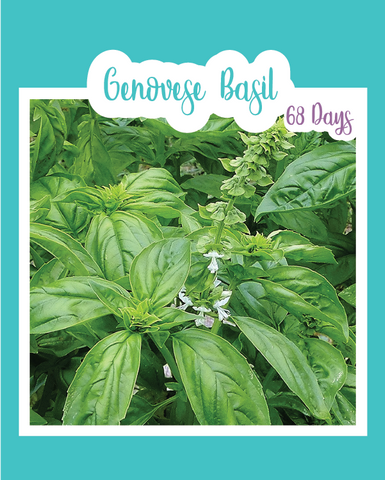
Walla Walla Onion
Long Day
Seed Count: Approx. 200 seeds
Days to Maturity: 125
Description: This heirloom is the pride of Washington state. The globe-shaped onion is exceptionally mild in taste, and makes jumbo to colossal-sized bulbs with light brown skin and pretty white flesh. It is the sweetest of the long-day varieties. Walla Walla is the only long-day that comes close to matching the sweetness of the Georgia Sweet onion. It will keep for a month, and can grow to be up to 2 lbs. Delicious for fresh slices on sandwiches, or cooked in a yummy French onion soup. It was developed in the late 1800s, and still earns a place on the table.
How To Grow
Sowing: Since onions take a few months to mature from seed, gardeners with a short growing season should start their onion seed indoors. Plant seeds 1/2 in. deep in small containers, 2-3 months before the last frost date. Keep the soil moist and at room temp. As soon as seedlings emerge, provide plenty of light on a sunny windowsill or grow seedlings 3-4 inches beneath fluorescent plant lights, turned on for 16 hours per day, and off for 8 hours at night. Raise the lights as the plants grow taller. Most plants require a dark period to grow, so it's important that you do not leave lights on for 24 hours. Seedlings do not need much fertilizer, feed plants when they are 3-4 weeks old using a starter solution (half strength of a complete indoor houseplant food) according to the manufacturer’s directions. When the tops begin to flop over, cut them off to 3" to focus the growth on the roots. Four weeks before the last frost, or when the soil is at least 50 degrees F, transplant to a location in full sun, where you did not plant onions the previous year. Space the seedlings 6 inches apart in rows 12 inches apart ( I like to plant seedling in the gaps between the two rows. Just make sure you don’t plant them in a straight column. For example, between four onions, I’ll plant one directly in the center because I plant in containers and space is limited). For direct sowing, sow 3 seeds per inch a 1/2 in. deep in light, rich soil (Onions prefer a pH of 6.0 – 7.0.) and full sun. Thin the seedlings 2-6 inches apart, depending on the desired size. Thinned onions can be transplanted or used for fresh eating. In areas with warmer winters, onions may be grown as a fall or winter crop as well.
Growing: Onions need moisture, especially in their first several weeks of growth. They also need protection against weeds. Mulching onions can help with both moisture and weed control. Ample water is important at all stages of growth, especially when bulbs are forming. Onions are shallow rooted, and tend to dry out during periods of drought. Make sure to keep the tops dry. If they are constantly wet they are more susceptible to disease. Onions are heavy feeders, and need to be side dressed with fertilizer about six weeks after planting. For companion planting benefits, plant onions with members of the cabbage family, lettuce, or tomatoes; avoid planting onions with peas or beans because members of the allium family can stunt their growth.
Harvesting: When the tops of the onions turn yellow or flop over, they have matured, and are ready to be harvested. Pull them from the earth, brush off the dirt, and leave them to cure in the sun for a week. If the weather turns rainy, bring them inside to cure in a dry, well ventilated place. When the skin dries, cut the tops down to 1" and trim the roots. Store in a cool, dry place. Onions need to overwinter before producing seeds. In warmer locations, simply apply a thick layer of mulch and remove it in the early spring. In areas with very cold winters, pull up the onions and cut off half the stem, and store them at 32-40 degrees F, in a dry place until spring, when they can be replanted. Before planting, cut an X in the top of the onion to allow the stalk to emerge. The plants will flower and go to seed. Remove the seed heads when the seeds become visible, taking care not to shatter the heads, losing the seeds. Spread the heads out in a dry place with good ventilation, and let them dry for several weeks. Thresh out the seeds and store them in a cool, dry place for up to 2 years.




